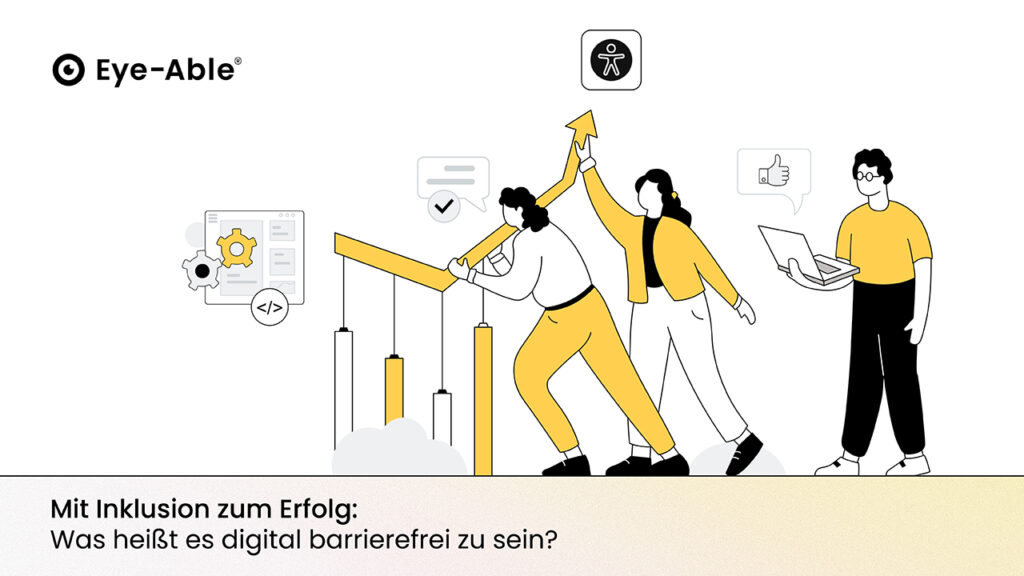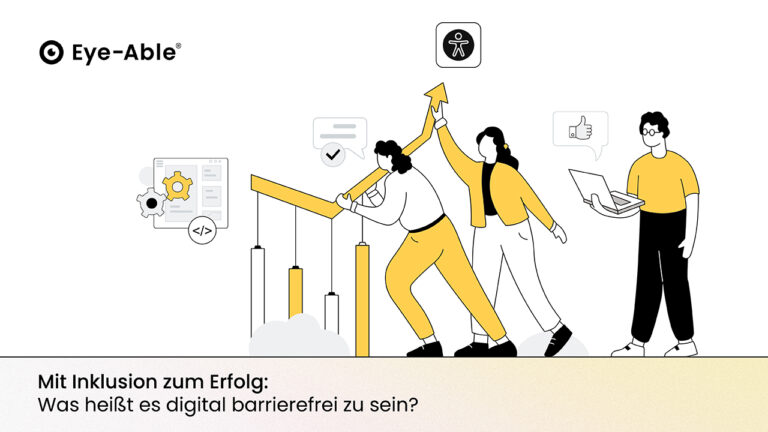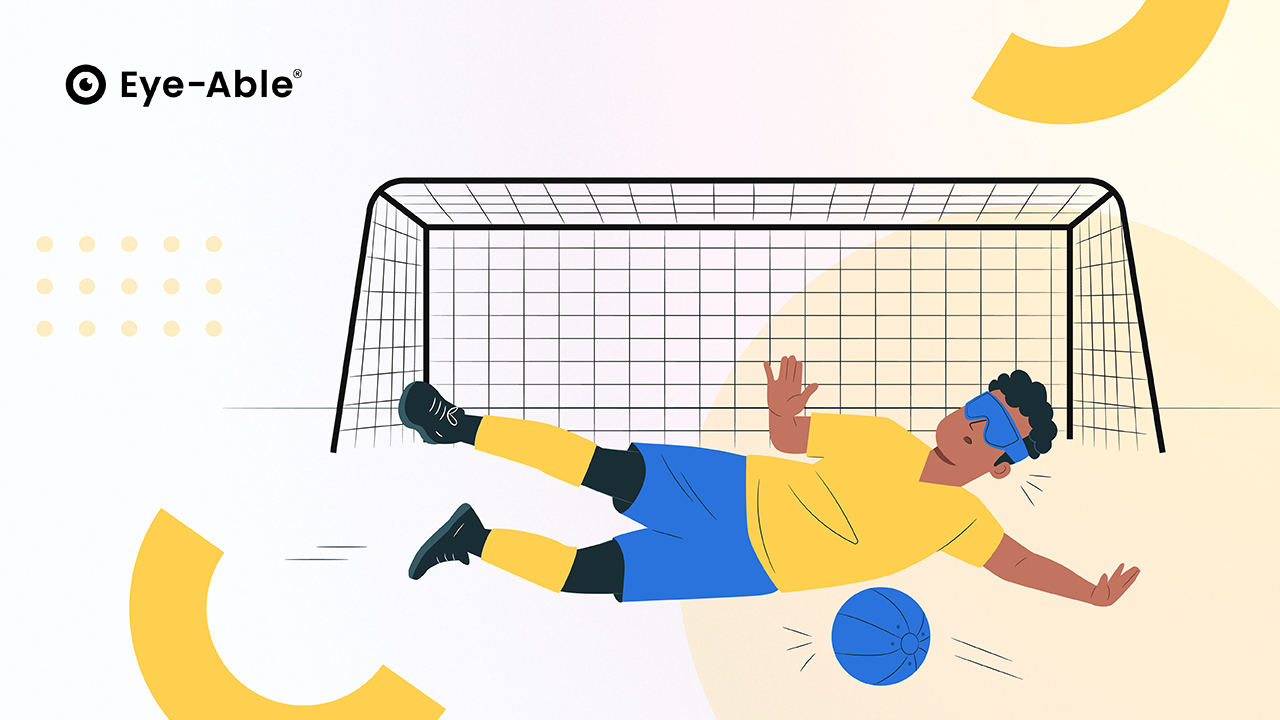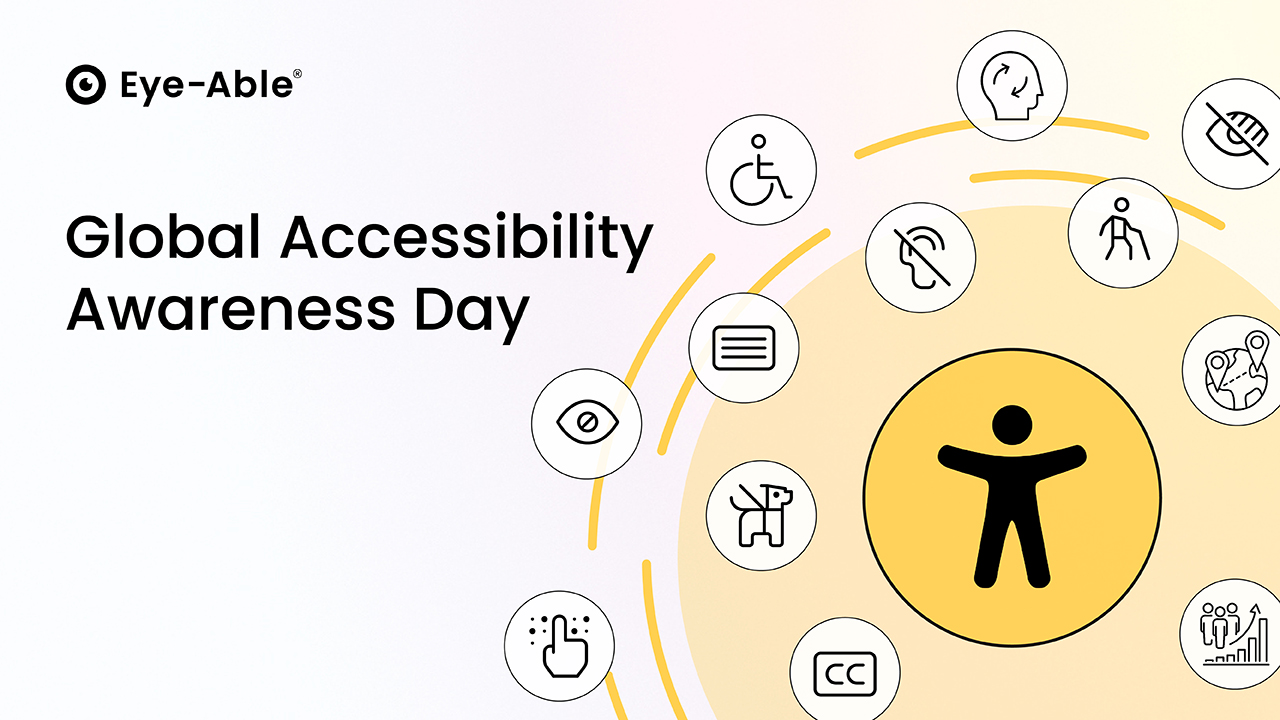The road to success is paved with... accessibility? That's right! The issue of digital accessibility is of great importance, especially as our daily lives increasingly take place online.
In the future, it will be absolutely essential to be digitally accessible, and not just because the deadline for the Barrier-Free Accessibility Act (BFSG) in June 2025 is approaching. A well-functioning website is above all the following: Clearly laid out, easy to navigate, well-structured and, not least due to the points mentioned above: Accessible. If you want your website to continue to perform well in the future, design it to be as inclusive as possible.
But what exactly does it take to be digitally accessible and what does this actually mean for whom? Perhaps there are even numerous advantages that can result from this? You can find out more in today's article:
Accessibility in general can be defined as follows: Buildings and other facilities, means of transportation (...) are barrier-free if they can be found, accessed and used by people with disabilities in the usual way, without particular difficulty and in principle without outside help. usable.
There are different regulations for private companies and public bodies when it comes to digital accessibility. Public bodies must meet the criteria of the Barrier-free Information Technology Ordinance (BITV) according to the requirements of the respective federal state fulfill. For companies, on the other hand, the technical requirements of DIN EN 301 549 apply.
DIN EN 301 549 specifies the requirements that products and services in the field of information and communication technology must meet in order to be considered accessible. This standard is crucial to ensure that digital content is accessible to all people.
The ninth chapter, which deals with the requirements for websites, is particularly interesting. The technical requirements refer to the Web Content Accessibility Guidelines (WCAG), which are recognized as a global standard and also serve as a legal basis in the USA. These guidelines are divided into different degrees of compatibility. These are A (low fulfillment of the requirements), AA and AAA (high fulfillment of the requirements).
The DIN EN 301 549 standard can be downloaded free of charge from the website of the Federal Monitoring Agency for Accessibility of Information Technology:
It is important to emphasize that digital accessibility is not just a legal obligation, nor is it solely a moral and ethical responsibility. It can offer numerous advantages to companies that have to implement the BFSG (Barrierefreiheitsstärkungsgesetz).
Around 1.3 billion people worldwide have a disability that prevents them from using websites properly. That's almost 20 percent! A study by Aktion Mensch also shows that around 80 percent of all websites are not accessible. Leaving this potential untapped would therefore be quite illogical from a business perspective.
Here are some points on how the implementation of digital accessibility can have a positive impact on companies:
- The customer base is expanded
- Digital accessibility has a positive effect on SEO (search engine optimization)
- Image is improved through social commitment
- Employees can develop their full potential
The study "The Fabric of Belonging: How to Weave an Inclusive Culture" by Bain & Company even shows that a non-inclusive environment can become a risk for a company.
Out of 10,000 employees surveyed (from Australia, Germany, France, the UK, Italy, Canada and the USA), only around 30 percent said they felt fully included and respected, regardless of whether they belonged to a minority or not. According to the study, the remaining 70 percent are more likely to look for another job: This group of people is six times more likely to resign.
By following and exceeding these guidelines, companies and public bodies can make a positive contribution to creating an inclusive digital society. To get closer to this goal, we all need to work together and do our part. Because only together can we create a future in which no one is excluded and all people can develop their abilities.






